#dragon worldbuilding
Text
I was writing, but then I came upon the fact that I don’t actually know what a healthy diet for my 300-600 pound reptiles would look like.
If you plan to keep reading, please tighten your seatbelts, not because this is exciting, but because we’ll be taking 90 degree turns at 45mph. This is basically just me researching out loud so people can see my process. Also, I will be mentioning various parts of animals that may make some people queasy.
Useveu are a species of intelligent, flight-capable reptiles that, in adulthood, stand between 6 to 9 feet high on average and weight roughly (so roughly) 300 to 600 pounds on average. They are carnivores, but they live closely to humans, and would therefore eventually incorporate other types of foods into their diets.
(I think it’s worth it to note that the humans who live in countries where Useveu are common almost always have a vegetarian diet. There are logistical and social reasons for this.)
Reptiles like komodo dragons and snakes can eat pretty much every kind of meat. Bones and organs are definitely going to be in an Usevuth’s diet, as well. Reptiles like geckos, however, seem to need veggies, and one thing I read specifically said to make sure geckos are getting enough calcium.
Komodo dragons and snakes eat their prey’s bones, but a gecko isn’t big enough to eat vertebrates. Pet birds, also, are said to need calcium-rich diets, and we humans go crazy for calcium supplements, but again, pet birds and song birds don’t get opportunities to eat bones, and humans don’t exactly make an effort to eat them.
So maybe Useveu won’t naturally need calcium-rich vegetables. And maybe they don’t need to avoid phosphorous if their intake of bone is high enough. But they are a social species living with another social species, and both have relatively high populations, and they have to pay for their food.
Poor Useveu will largely exist off of chicken, eggs, and probably fish for their meats. These are all high in calcium when consumed whole. But there are more dietary needs than that. Useveu are huge animals, and in whatever wild conditions their bodies evolved to cope with, they definitely eat red meat. If their body relies on red meat in their diet but they’re too poor to afford meat from larger animals, this could lead to iron and vitamin B deficiencies.
I think the bottom line for the fact of whether these guys are getting everything they need from a diet of animals is pretty straightforward. If they are consuming healthy animals whole, they themselves will be healthy. This is with the sole exception of deficiencies from being unable to afford red meats. These can probably be compensated for with the purchase of blood (iron, affordable) and whatever amounts of liver (B vitamins, expensive) can be managed.
My questions becomes what non-animal items an Usevuth can eat off of a human’s plate.
I know for a fact that Usevase (males) will have citrus in their diets. But citrus fruits require a substantial amount of water to grow, and in a pre industrial revolution world where there are no freshwater rivers or lakes particularly nearby, these foods become expensive. However, there are trains, which can extend the reach of an affordable citrus belt. Flying to buy or deliver groceries like this would be impractical and expensive, since the quantity of products would be small for such a long distance.
Citrus fruits contain a lot of oils, acids, and vitamin C. Usevase have a bodily use for the oils (which can be harmful to digestion in other animals), and will build a tolerance to the acids. Psoralen, which is a substance that can cause cell damage when combined with sunlight in the skin, would be mostly harmless to Useveu thanks to their scales.
So citrus doesn’t pose a threat to my reptiles that I have to worldbuild around. Then I look to staples of human vegetarian diets that will grow in the climate I’m looking at, as these will be foods Useveu are most likely to ingest.
Vegetarian staples are largely going to be protein-rich foods, like lentils, beans, quinoa, and eggs. My climate can’t grow quinoa, but soy and lentil are fine. Another good food would probably be brown rice, which can grow in this climate, as well. Looking at its contents for things that could hurt a reptile, I see unfamiliar things like selenium and manganese, but both are water soluble and will be passed by the body once it has the amount it needs. Bread is another thing that will likely find its way into an Usevuth’s diet, and wheat is both accessible and appears to be non-toxic.
Last on the list of human foods I’m going to bother worrying about is cabbage, which appears to be completely fine for reptiles. Some species have trouble due to acidity or phosphorous levels in various breeds of cabbage, but this shouldn’t be a problem for Useveu.
So there I have it. I wasted what must have been almost an hour and a half finding out that nothing I was trying to feed my reptiles was actually going to hurt them. But at least now I know!
눈_눈
Writing is great. Always do your research.
---
Yes, I have sources. No, I will not format or further fact-check them.
https://ielc.libguides.com/sdzg/factsheets/komododragon/diet
https://www.completecritter.com/leopard-gecko.html
https://birdsupplies.com/blogs/news/144550983-calcium-deficiency-in-parrots-and-what-to-do-about-it
https://reptilecraze.com/what-human-foods-can-snakes-eat/
https://www.fitday.com/fitness-articles/nutrition/healthy-eating/white-meat-vs-red-meat.html
https://www.historyrundown.com/can-cats-and-dogs-eat-citrus-fruits/
https://www.thekitchn.com/10-vegetarian-staples-that-are-always-on-my-shopping-list-252972
https://morningchores.com/growing-quinoa/
https://www.homedepot.com/c/ai/find-your-usda-plant-hardiness-zone/9ba683603be9fa5395fab90108cf77fc
https://www.healthline.com/nutrition/is-brown-rice-good-for-you#nutrition
https://www.hsph.harvard.edu/nutritionsource/selenium/
https://www.mountsinai.org/health-library/supplement/manganese
https://www.healthline.com/nutrition/foods/wheat#vitamins-and-minerals
https://homeguides.sfgate.com/conditions-need-grow-rice-wheat-corn-soybeans-80104.html
https://dragonsdiet.com/blogs/dragon-care/can-bearded-dragons-eat-cabbage
https://www.animalhouseofchicago.com/news/reptile-amphibian-herbivore-nutrition
#worldbuilding#food worldbuilding#not canon#dragon worldbuilding#dragon diet#worldbuilding research#writing research#this is what research looks like I guess#just wanted to share the thoughts and process I go through#for one line of a story#this took so long#*drags hands down face*#I am better for this knowledge and now anyone who needs it has it you're welcome#writing
2 notes
·
View notes
Text
On the one hand, it's true that the way Dungeons & Dragons defines terms like "sorcerer" and "warlock" and "wizard" is really only relevant to Dungeons & Dragons and its associated media – indeed, how these terms are used isn't even consistent between editions of D&D! – and trying to apply them in other contexts is rarely productive.
On the other hand, it's not true that these sorts of fine-grained taxonomies of types of magic are strictly a D&D-ism and never occur elsewhere. That folks make this argument is typically a symptom of being unfamiliar with Dungeons & Dragons' source material. D&D's main inspirations are American literary sword and sorcery fantasy spanning roughly the 1930s through the early 1980s, and fine-grained taxonomies of magic users absolutely do appear in these sources; they just aren't anything like as consistent as the folks who try to cram everything into the sorcerer/warlock/wizard model would prefer.
For example, in Lyndon Hardy's "Five Magics" series, the five types of magical practitioners are:
Alchemists: Drawing forth the hidden virtues of common materials to craft magic potions; limited by the fact that the outcomes of their formulas are partially random.
Magicians: Crafting enchanted items through complex manufacturing procedures; limited by the fact that each step in the procedure must be performed perfectly with no margin for error.
Sorcerers: Speaking verbal formulas to basically hack other people's minds, permitting illusion-craft and mind control; limited by the fact that the exercise of their art eventually kills them.
Thaumaturges: Shaping matter by manipulating miniature models; limited by the need to draw on outside sources like fires or flywheels to make up the resulting kinetic energy deficit.
Wizards: Summoning and binding demons from other dimensions; limited by the fact that the binding ritual exposes them to mental domination by the summoned demon if their will is weak.
"Warlock", meanwhile, isn't a type of practitioner, but does appear as pejorative term for a wizard who's lost a contest of wills with one of their own summoned demons.
Conversely, Lawrence Watt-Evans' "Legends of Ethshar" series includes such types of magic-users as:
Sorcerers: Channelling power through metal talismans to produce fixed effects; in the time of the novels, talisman-craft is largely a lost art, and most sorcerers use found or inherited talismans.
Theurges: Summoning gods; the setting's gods have no interest in human worship, but are bound not to interfere in the mortal world unless summoned, and are thus amenable to cutting deals.
Warlocks: Wielding X-Men style psychokinesis by virtue of their attunement to the telepathic whispers emanating from the wreckage of a crashed alien starship. (They're the edgy ones!)
Witches: Producing improvisational effects mostly related to healing, telepathy, precognition, and minor telekinesis by drawing on their own internal energy.
Wizards: Drawing down the infinite power of Chaos and shaping it with complex rituals. Basically D&D wizards, albeit with a much greater propensity for exploding.
You'll note that both taxonomies include something called a "sorcerer", something called a "warlock", and something called a "wizard", but what those terms mean in their respective contexts agrees neither with the Dungeons & Dragons definitions, nor with each other.
(Admittedly, these examples are from the 1980s, and are thus not free of D&D's influence; I picked them because they both happened to use all three of the terms in question in ways that are at odds with how D&D uses them. You can find similar taxonomies of magic use in earlier works, but I would have had to use many more examples to offer multiple competing definitions of each of "sorcerer", "warlock" and "wizard", and this post is already long enough!)
So basically what I'm saying is giving people a hard time about using these terms "wrong" – particularly if your objection is that they're not using them in a way that's congruent with however D&D's flavour of the week uses them – makes you a dick, but simply having this sort of taxonomy has a rich history within the genre. Wizard phylogeny is a time-honoured tradition!
#gaming#tabletop roleplaying#tabletop rpgs#dungeons & dragons#d&d#worldbuilding#taxonomy#phylogeny#media#literature#history#literary history#death mention
3K notes
·
View notes
Text
“You just wrote your medieval fantasy setting to have medieval gender roles and homophobia and prejudice because you secretly fantasize about being able to be sexist and homophobic in a land with no PoC without any pushback! It’s fantasy, there’s dragons and wizards, it doesn’t have to have prejudice unless you, the writer, want it like that! In *my* D&D setting, there’s no sexism or homophobia, so that gay transgender women of all races can be holy knights fighting to protect the good kingdom from the endless hordes of the evil dark race that has threatened its borders for a thousand years!”
#writing#medieval fantasy#medieval women#fantasy#d&d#d&d 5e#dungeons and dragons#ttrpg#books#novels#worldbuilding
4K notes
·
View notes
Text

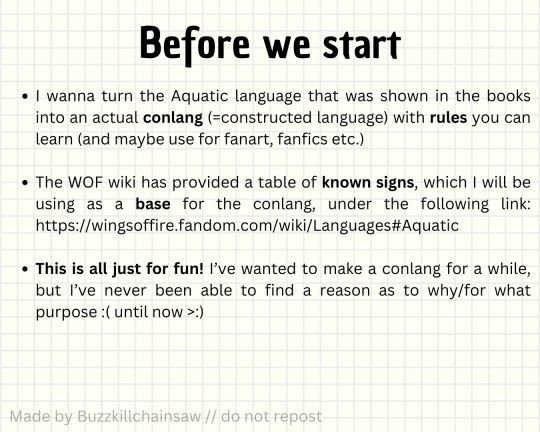

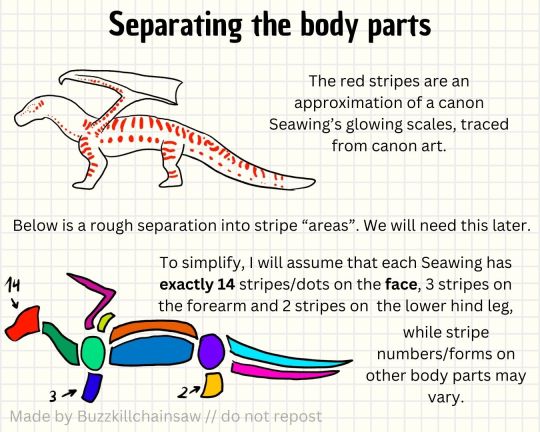


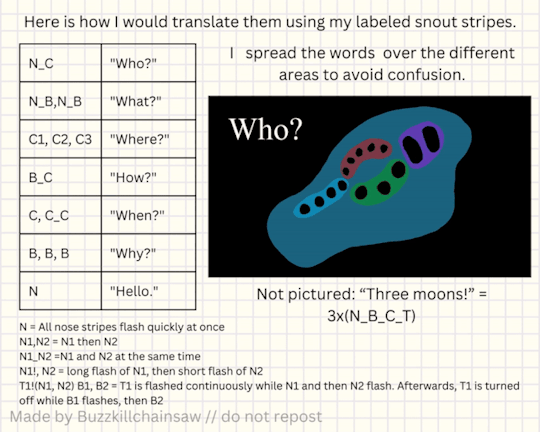
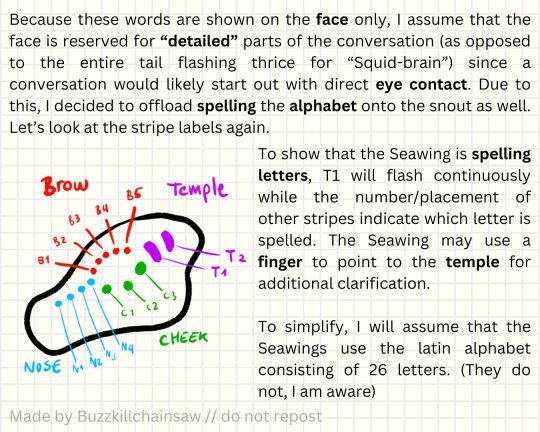
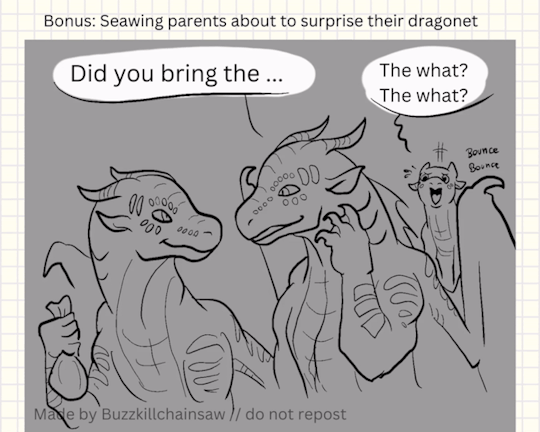
Yes I'm serious, no I'm not okay
(I'll be tagging this and further parts as #buzzkill aquatic so feel free to use that tag too if you use my aquatic expansion in your art/animations/fanfics etc)
Next part (tail edition):
#buzzkill aquatic#wof#wings of fire#seawing wof#wof seawing#seawing#aquatic#conlang#dragon#lore#worldbuilding
3K notes
·
View notes
Text

Dungeon Meshi Adventurer's Bible - Dungeon cross section
Details under the cut
Details cropped from this reddit post
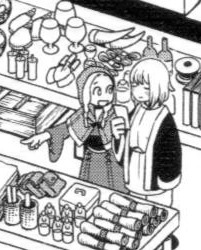

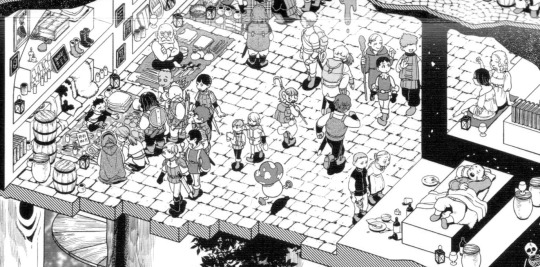
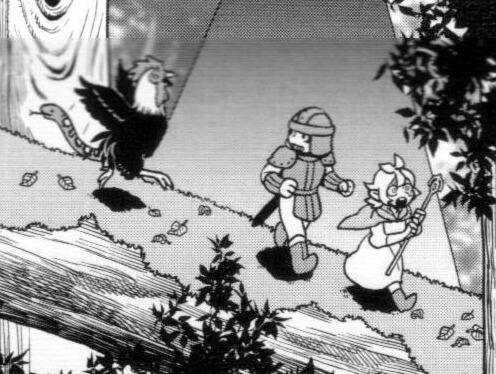
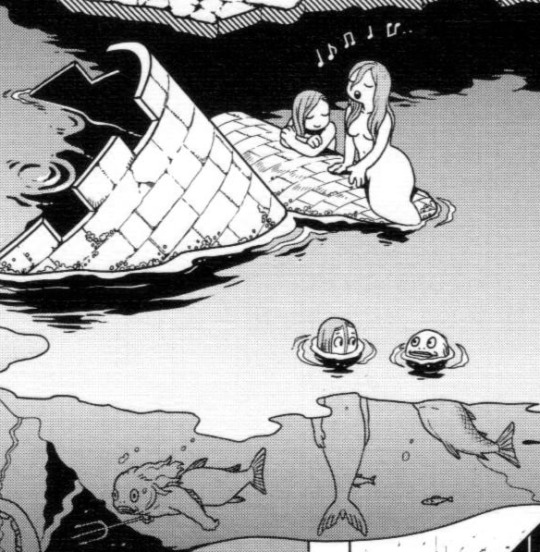
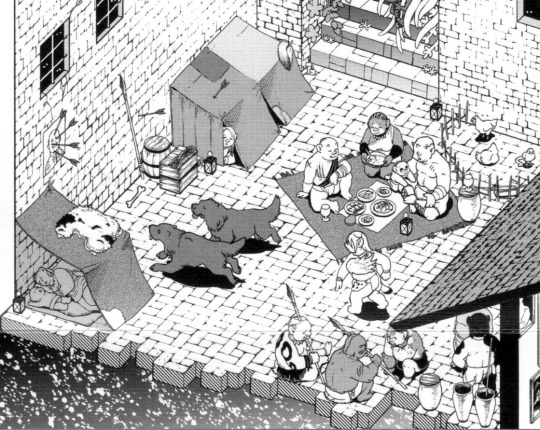
#Dungeon Meshi#adventurers bible#took me a LONG time to find a good quality full version of this#please open the full image to properly see it#tumblr mobile also ruins the quality..#Falin touden#marcille donato#chilchuck tims#leed#leed dungeon meshi#orcs#mermaid#fionil#doni#inutade#tade#hien#benichidori#is hien winking at the waitress?#worldbuilding#dungeon layout#dungeon levels#red dragon#dungeon meshi orcs#maps
3K notes
·
View notes
Text
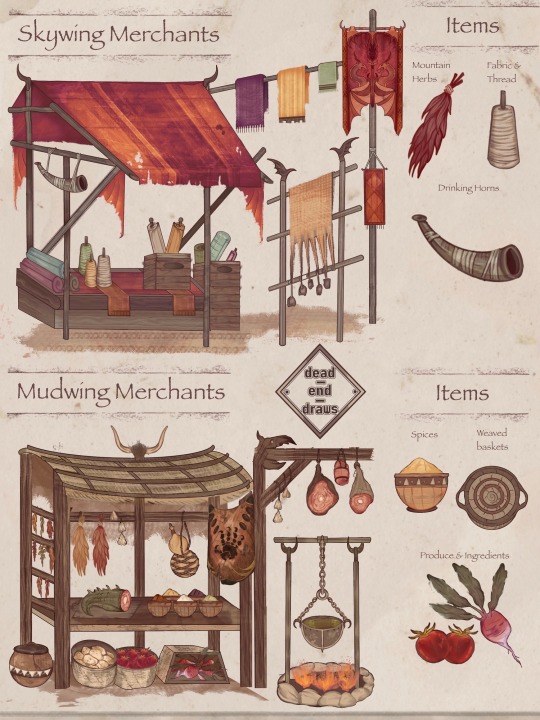

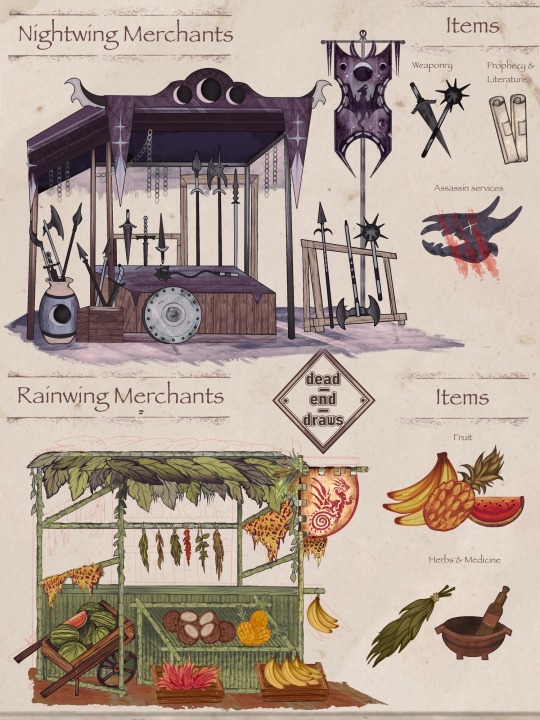
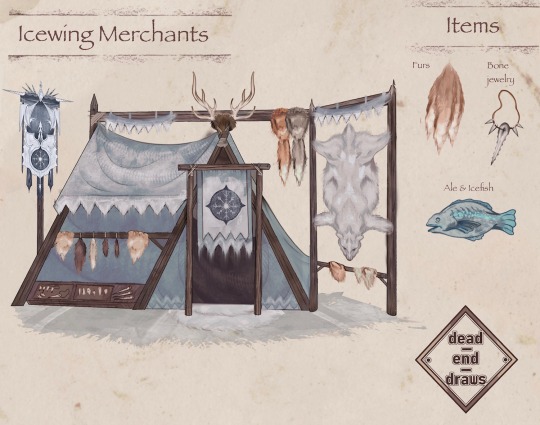
WOF tribe Merchant/Trading booth concepts:
Hey folks! This one was the recent winner of this WOF poll, so here’s my concept art that headcannons trading in Pyyria.
Read below cut for close-ups of the individual booths + the thought process / headcannons behind the design choices: 👇
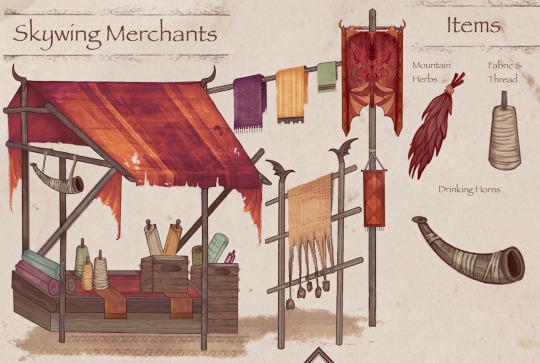
Skywings: The Sky Kingdom’s mountain ranges provide plenty of pasture for raising sheep. As such, Skywing shepherds benefit from traveling to sell their wool, dyes, fabric, and woven tapestries. Many of these merchant tables also include herbs grown exclusively in the mountains, or ibex drinking horns that can be strapped on a dragon’s shoulder & carried in flight.
Along with goods, Skywing merchants may offer sewing services to fix tears, burn marks, or other fabric damage. They are sought out for their quality clothing, and most fabric across Pyyria originated from a Skywing’s talons.
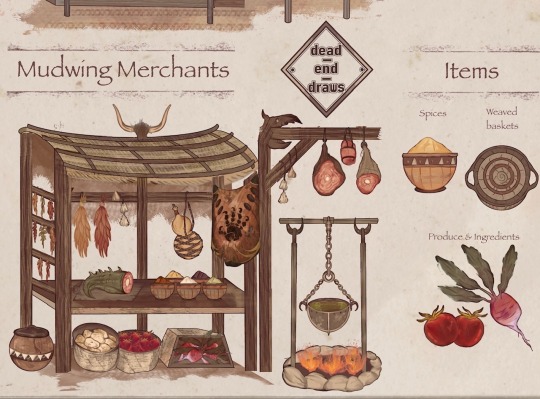
Mudwings: Mudwings’ abundant food & cooking skills are envied almost anywhere in Pyrria. Their swamps have fertile soil, responsible for hosting diverse crops which can be purchased as produce at merchant stalls. For those lucky enough to find a traveling Mudwing merchant, the promise of a delicious dish can be whipped up and served at the stall in no time. Along with produce goods, Mudwings sell weaved baskets, spices, and cooking ware.

Sandwings: Sandwing booths offer luxuries of the desert: It’s most common to find accessories such as gold carved jewelry or musical instruments such as drums, lyres, & mandolins for sale. Though, even more sought out across Pyrria is Sandwing tattoos/piercings, which are done within the merchant areas. Ink etchings on papyrus paper are stationed outside their tents to showcase designs. All which can be selected, and poked into the skin with a tapping stick and plant dye ink by a trained talon.
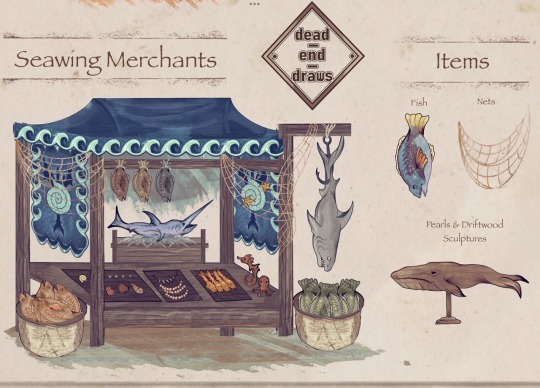
Seawings: SeaWings sell a variety of ocean related goods; taking a share in the fish market with Icewings. Outside of food, there are den decorations like driftwood carvings, accessories such as seashell & pearl jewelry, and rope nets weaved by expert Seawing sailors. Some Seawings even sell fishing equipment, canoes, or offer sailor knot tying instructions to curious dragon buyers.
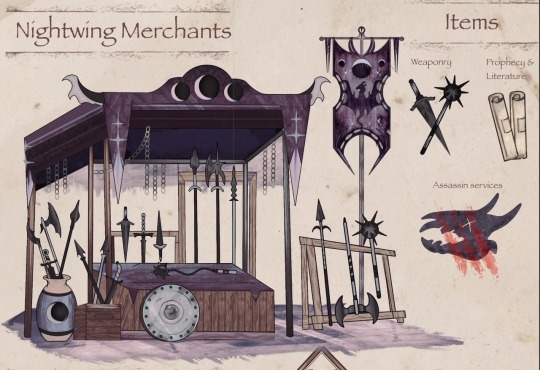
Nightwings: During the war, it was near impossible to find a Nightwing merchant. Most refused to participate in merchant territory, mostly as a way to keep up with their tribe’s mysterious nature.
Though in the more shady, unground parts of the market you can buy from a huge selection of obsidian weaponry, the sharpest in Pyyria. No one knew initially how Nightwings smithed so many weapons, or why, until their secret volcano kingdom and the intention to invade the rainforest was discovered. Then forging armor & weapons became clear. Along with a vast armory, for the right price, some Nightwing merchants offer Prophecies & Nightwing Literature (not always guaranteed to always be reliable) and assassin services as well (very reliable).
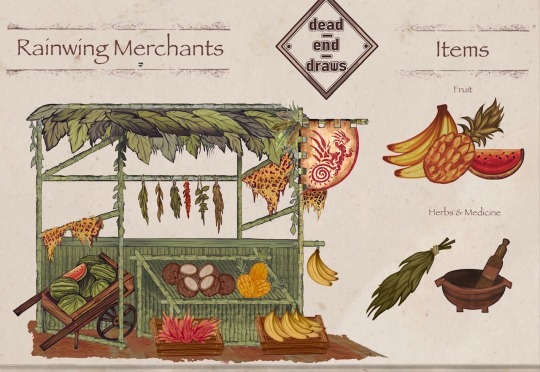
Rainwings: Though Rainwings haven’t been part of Pyyria’s trading for years, they have a vast hold on dragon medicine. An apothecary of herbs, salves, and remedies are all offered for various ailments due to the rainforest’s abundant resources. Along with medicinal goods, many Rainwings are fruit vendors, promising to any hesitant meat-eating dragons that such an array of flavors isn’t to be missed. Though, their fruit selling pitches often fall flat to most other predominantly meat-eating tribes.
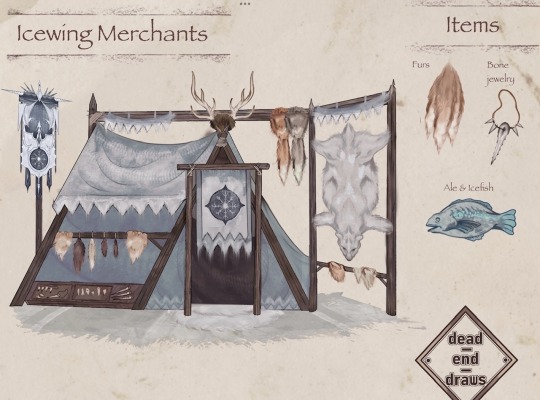
Icewings: Icewings have everything a dragon could need to brace the cold, with a selection of goods only found in the most frigid regions of Pyyria. Furs, bone jewelry, and fresh fish (thanks to frost breath) are served on ice. Though Icewings themselves don’t require fur to withstand the cold, it’s considered fashionable and common in upper ranks to wear fur as a status symbol. Since metal is hard to smith without fire & in cold temperatures, fur and bone are more accessible to Icewings for clothing statements.
#art#illustration#bookart#wings of fire#wof#dragon#concept art#concept design#dragons#dragon art#wings of fire art#wingsoffire#wings of fire fanart#wof art#wof headcanon#wof tribes#skywing#Seawing#Mudwing#sandwing#rainwing#icewing#nightwing wof#nightwing#wof fanart#wings of fire headcanons#illustrative art#worldbuilding
2K notes
·
View notes
Text
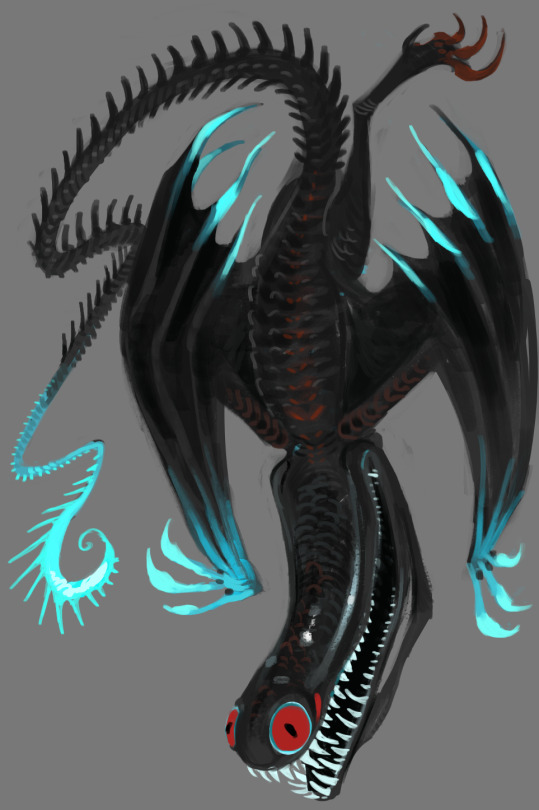
Not much is known about the Grinning spectres. These dragons only appear at night; Red crimson eyes stare at their next meal in the middle of a foggy coast. Grinning spectres hunt by sight, their nostrils are too small to actually pick up any scent left by their prey (often sea birds, humans and other mammals, smaller dragons... anything that their big jaws can get a grip of.)
Experienced fishermen warn young sailors and explorers to not steer too close into shining blue lights in the middle of the sea, those are indeed Grinning spectres trying to lure in their prey with constant flashes of blue.
They are loud, producing high pitched screeches and screams when alerted. And if they werent horryfiyng enough, they have a second set of jaws near their throat! they appear to use these for chewing and swallowing rather than cutting and thrashing unlike their first set.
They are very freaky beasts indeed... albeit they're quite cowardly on their own. Grinning spectres are closely related to the Slopsider, and are categorized as ''fish-like'' wyverns.
#digital art#artists on tumblr#creature design#illustration#unnamed worldbuilding project#dragon#dragon art
2K notes
·
View notes
Text

Mimicry is a common evolutionary path for many “magical fauna”, including drakes. While many of the larger more impressive dragons have evolved outside of this, smaller drakes took to mimicry in vast numbers. From mimicking plants to insects mimicry is one of the major defense mechanisms for smaller dragons.
#concept art#creature design#fantasy art#creature concept#concept design#monster#fantasy#dragons#speculative biology#dragon#conceptart#creaturedesign#creatureconcept#fantasyart#illustration#bestiary#worldbuilding#dungeonsanddragons#artistoninstagram#digitalart#monstergram#sketch#wyvern#magicthegathering#creatuanary#insect#bug#rhinocerosbeetle#stickbug#beetle
2K notes
·
View notes
Photo

overly specific dnd meme that could also be about godhood if you think about it
#dnd#dungeons and dragons#d&d#dnd 5e#d&d 5e#dnd memes#comic#comics#wizard#digital art#art tag#discworld if you squint#worldbuilding#writing#writeblr#bc i do this with my comics too. sigh.
19K notes
·
View notes
Text
Wings of fire dragons firebreath headcanons

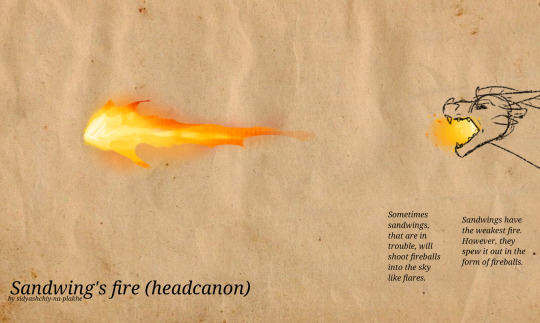


I think it would be boring if all dragons had the same fire.
#Not an interesting fact: until the 5th book I sincerely thought that sandwings could not breathe fire#wof#wings of fire#драконья сага#dragon#digital art#my art#wof nightwing#wof skywing#wof mudwing#wof sandwing#wof headcanon#wof worldbuilding
1K notes
·
View notes
Text
🩸Blood & Honey 🩸
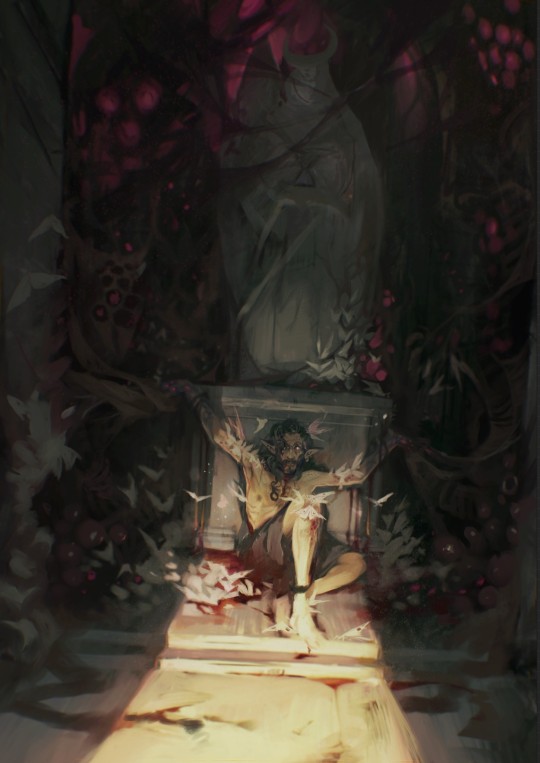
With your descent through the layers upon layers of arches and stairs, the forgotten ruins of the city that is Arca begin to hum to an otherworldly song. A choir made of thousands of voices, lily white wings vibrating against each other as they collect the fuits of their labor.
Blood of gods, Ichor filtered from the very veins of mortals, dripping like honey. Tempting to surrounding lips, shuddering with anticipation. To consume is to thrive, may the cost be sweet.
So... The campaing I'm dming for my friends,,, Mystery of Blood and Honey... No longer a mystery. Reveals that had been planned like three years ago coalesced into what have been two sessions full of reveals, old loved (and hated) npcs appearing and a lot of stress and strong emotions. Super glad to have experienced the thrill of leaving clues for the pcs and watching how they fared elaborating theories. I cannot stress enough how fun this was and god, i wish i could share it with y'all sometime in the future in some way. Dnd, am i right?
#dnd#dnd characters#concept art#illustration#horror#cw: body horror#bugs#trypophobia#dungeons and dragons#worldbuilding#nomnomnomnom
1K notes
·
View notes
Text
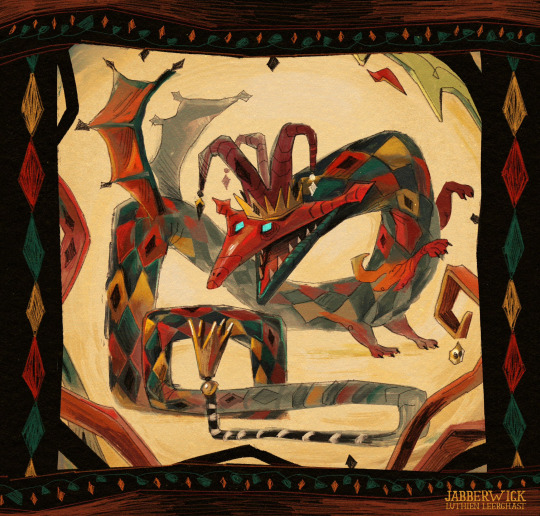
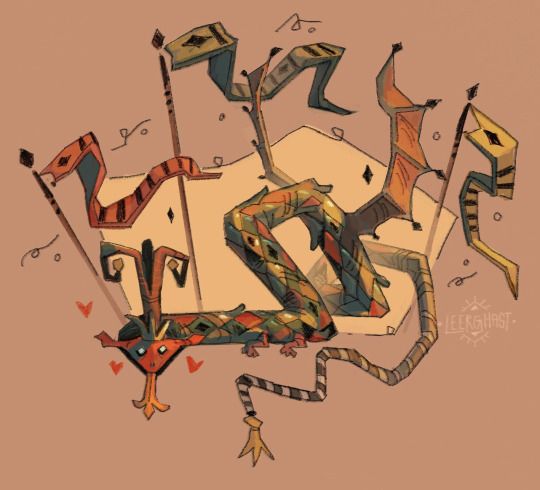
Writhing, King of wyrms
(she/her)
Writhing is the king and mother of wyrms. She is an important character from my story.
5K notes
·
View notes
Text
Ed Greenwood certainly doesn't need me to defend him, but I will point out that the Forgotten Realms is atypical for settings of its type in that it's not just the designated "evil" civilisations that are presented as magical matriarchies ruled by immortal-but-visibly-middle-aged sorcerer queens with interesting ideas about rehabilitative justice – a lot of the ostensibly utopian polities are also Like That. The Realms are a safe space for dommy mommies of all alignments.
#gaming#tabletop roleplaying#tabletop rpgs#dungeons & dragons#d&d#forgotten realms#ed greenwood#worldbuilding#tropes
2K notes
·
View notes
Text
do u think studying how caterpillars totally liquify into living soup that somehow knows how to then restructure and solidify into a butterfly might be how we unlock the shapeshifting power-up on the evolution skill tree
#sporadic warbling#when can test to see if butterflies retain memories from when they were caterpillars in spite of their brains also becoming soup#i'm doodling worldbuilding stuff about how succubi/incubi work in MD and thinking about Bugs#and all the wild stuff bugs do#you know how it is when ur trans u inevitably start tappin ur foot waiting for when science can give u dragon parts
3K notes
·
View notes
Text
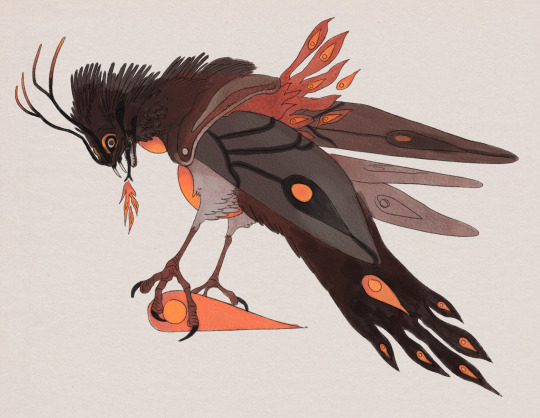
Amekhoz, dragon of fire, is only seen in the depths of summer, setting alight field and forest. His cyclical lifecycle is short and brutal, but a known constant, unlikely to fizzle out over the long term.
#ohote#my art#worldbuilding#dragon#fire#he's got.. echidna buzzard grasshopper rattlesnake salamander and moth up in that there design#i struggled sooo hard for the longest time on this guy and now I can Finally start on literally all the others haha
3K notes
·
View notes
Text
also, while we are at it
"my dragon flies because it's magic xdxddxdxd"
fine, acceptable, it's magic. Okay. Even as a biologist I'm willing to give it a pass. God knows that in my space opera project I've went "mumble mumble convergent evolution mumble" for some of my earth-like aliens. The shape is kinda believeable and original, you chose some cool features, it's fine, no need for the whole phylogenetic tree.
Now, why is it magic? what does it mean it is magic?
Were dragons created by a god? are they manifestations of nature? why are dragons, especifically, magic and not say, crocodiles?
Is it a species with physical presence and a life cycle, or are they magical beings? how many dragons are there, how important they are to your world? are they worshipped, feared, venerated, just some kind of weird megafauna but otherwise unremarkable? what do they eat, how much?
If it's a sentient dragon from a physical species, as most modern fiction seems to assume (you'd be surprised that in most medieval works they were mostly mindless beasts or demons, dragons as noble creatures are very much a modern invention in the West) how do they think? How do they act differently from smaller, less powerful, shorter lived species? Do they have their own gods, their own rituals, their own beliefs? Are they lonely beings or are they able, or interested, to form part of society, or even have their own societies?
What's the cultural role of a dragon in the world you're making? What do your characters think when they hear the word 'dragon'? What do they know about dragons, when your hero goes and finds one, what are their conceptions of it? Can they fight it? How? Why?
Notice that most of my questions aren't stupid UNREALISTIC! CINEMASINS DING!, but things that actually affect your characters, setting and plot. Don't like to write a ethnographical paper about dragons? do it anyways or I'll shoot you, don't, but if you're introducing an element to your story, even if you're using stock fantasy elements like dragons, you will benefit A LOT from thinking how they fit into your story.
And even in settings were "it's magic" is acceptable as an answer, or more *surreal* or comedic stories where things happen without too much logic, a dragon is still a symbol. What does your dragon mean in your story? "oh, a magical dragon". Fine. Why is there a dragon on your story? Don't have a whole herpetology paper, because this is just a romance? Okay, can you spare me a couple lines to tell me what does a dragon mean in your world? That too, is yuri worldbuilding.
#cosas mias#worldbuilding#dragons#down here the enviroment is all salt the floor is salt the ceiling is salt the walls are salt and to an extent the air is salt and you brea
4K notes
·
View notes